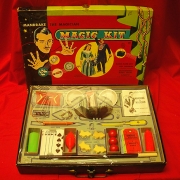Putting Questions in Readers’ Mouths
Putting words into someone’s mouth is generally a bad thing, merriam-webster.com explains, because it suggests that person said or meant something that he or she did not actually say or mean. When it comes to blog marketing, though, putting questions into someone’s mind might be a very good thing for all concerned, we’ve discovered at Say It For You. In Writer’s Digest, Peter Mountford encourages writers to “make your character explicitly ask for the the thing they want.” That’s because, Mountford asserts, a request creates an explicit, as-yet-unfulfilled desire, in turn creating tension (and therefore interest).Instead of having the protagonist’s sister say “Hey, why don’t you borrow my car?”, have Sarah urgently ask to borrow the car for an urgent errand – despite her history of car accidents.
Questions are central to blog marketing strategy. As Team Kapost of uplandsoftware.com writes, “Questions create intrigue, serving as an invitation to participate in a conversation”. At Say It For You, we’ve certainly found this to be true. Keeping in mind that people are online searching for answers to questions they have and for solutions for dilemmas they’re facing, it’s also true that searchers haven’t always formulated their questions. What I suggest, therefore, is that we do that for them. After all, we’re out to engage our blog readers and show them we understand the dilemmas they’re facing.
What’s more, sales trainers often stress that being able to ask questions satisfies prospects’ need to control the situation. So if we as blog writers can go right to the heart of any possible customer fears or concerns by addressing negative assumption questions (before they’ve even been asked!), we have the potential to breed understanding and trust.
As business blog content writers, we need to impress readers even before they’ve had the chance to ask us their questions. While those readers are online because they’re searching for answers to questions they have and for solutions for dilemmas they’re facing. I really believe that blog writing for business will succeed only if two things are apparent to readers, and in the order presented here:
- You (the business owner or professional practitioner) understand their concerns and needs.
- You and your staff have the experience, the information, the products, and the services to solve exactly those problems and meet precisely those needs.For blogs to be effective, they must serve as positioning statements. The “visit” has to conclude with readers understanding exactly what your particular philosophy or mission is. Even though the encounter is taking place online, prospects are always mentally posing the “What’s In It For Me?” question. What’s the benefit in this for ME? How will MY interests be protected and served if I choose to do business with you or become your client or patient? What will you do to keep ME “safe” from risk?
So, by all means, go ahead and put questions into your blog readers’ mouths!






Follow us online!